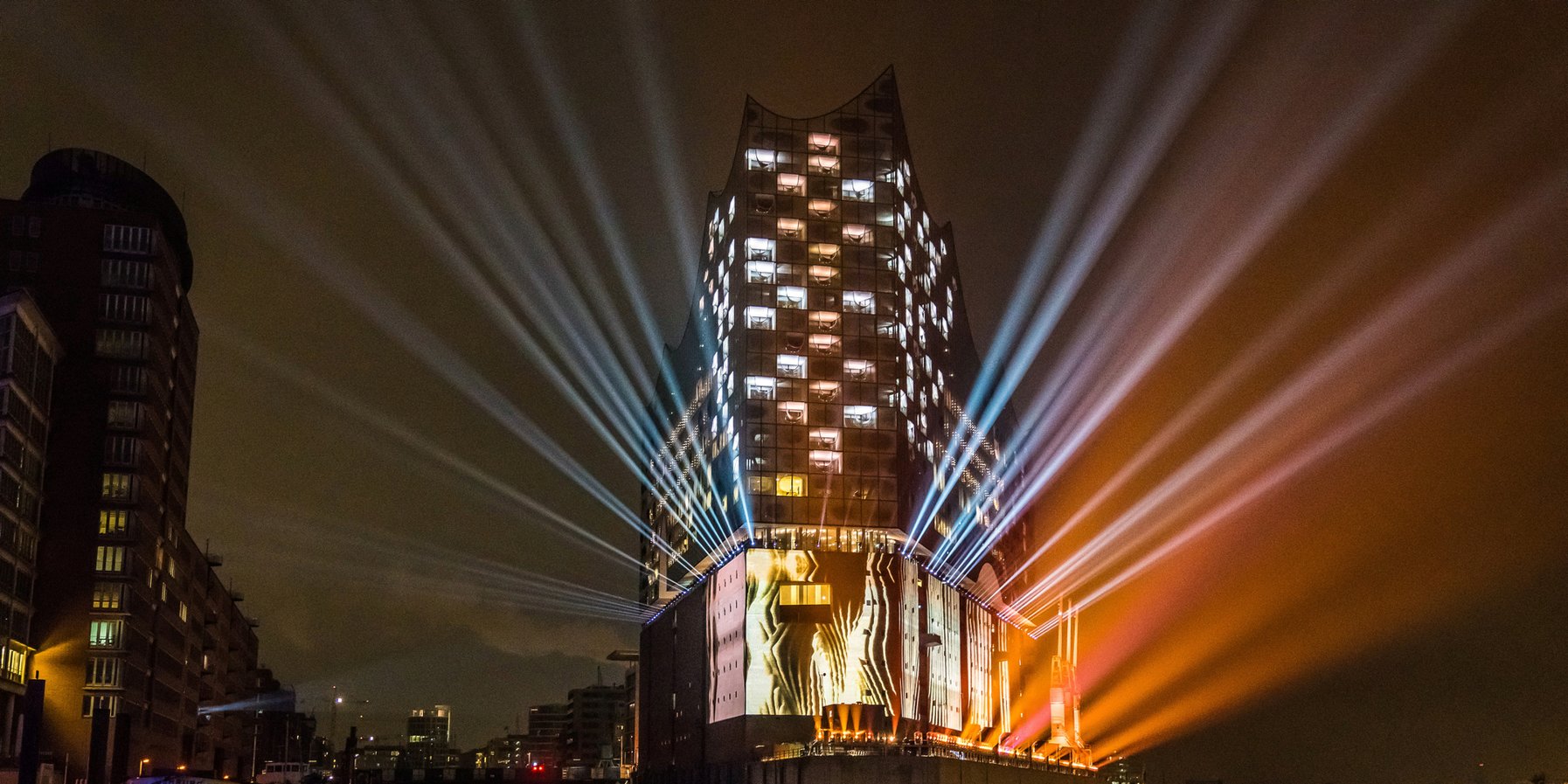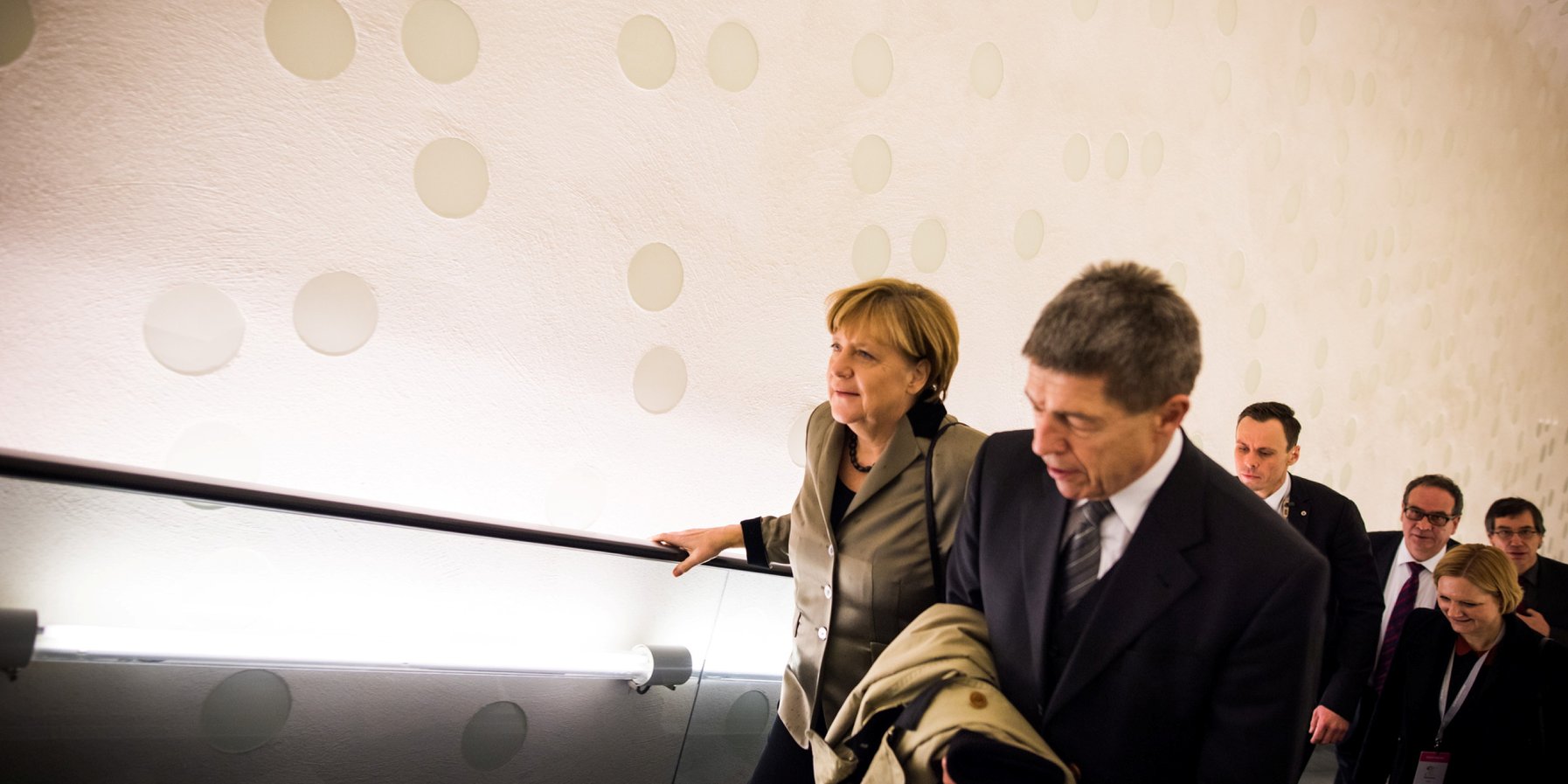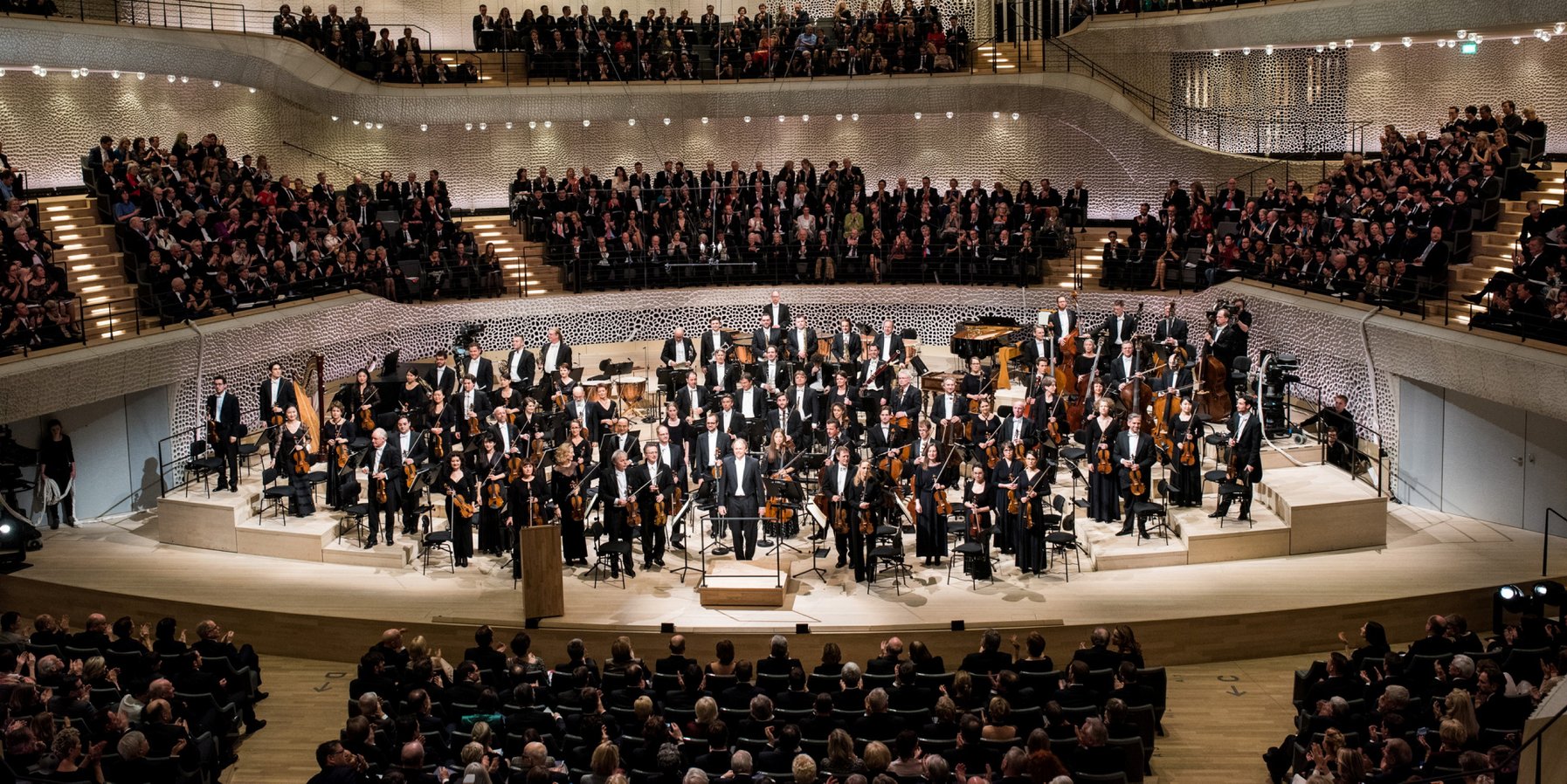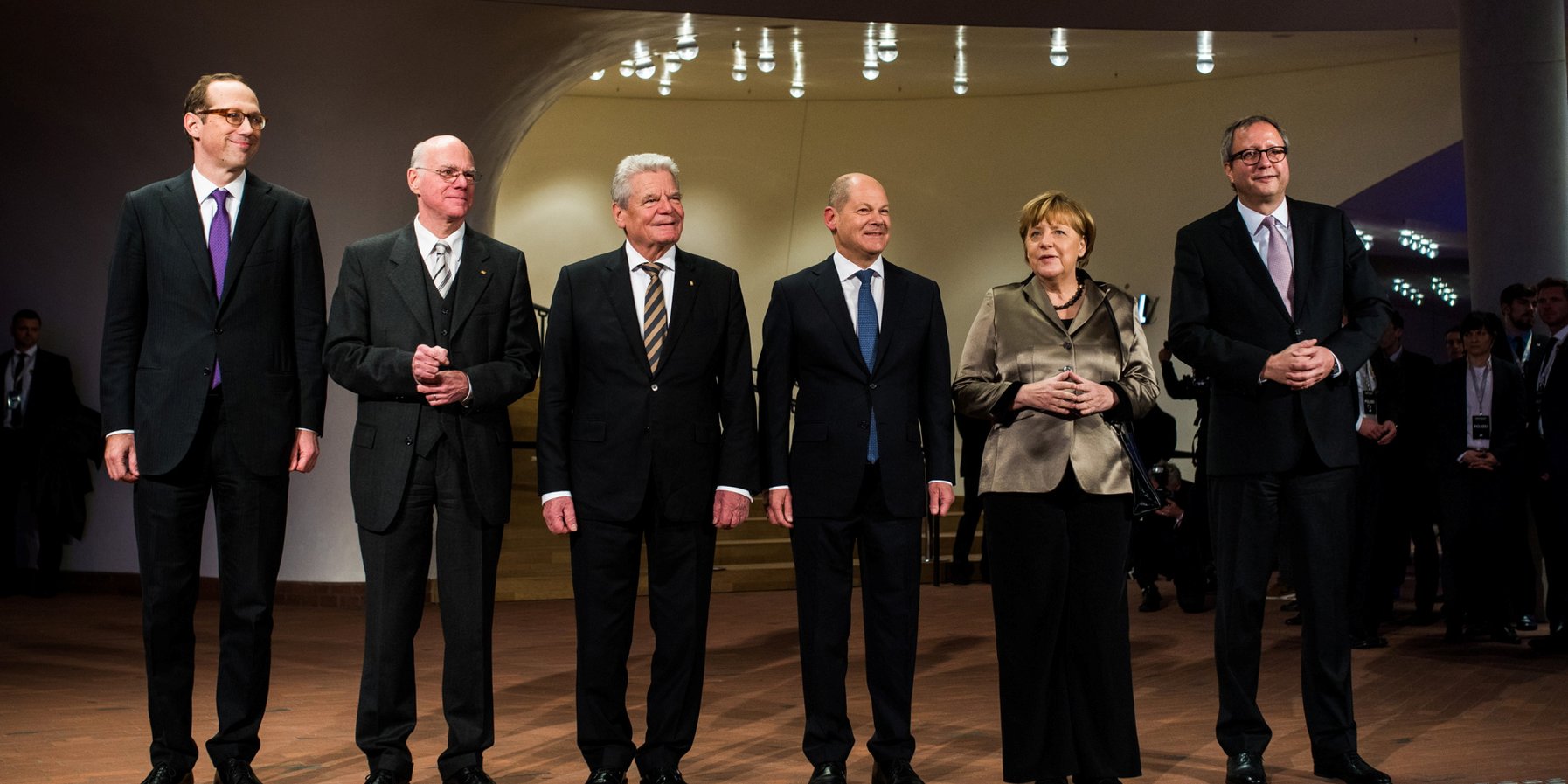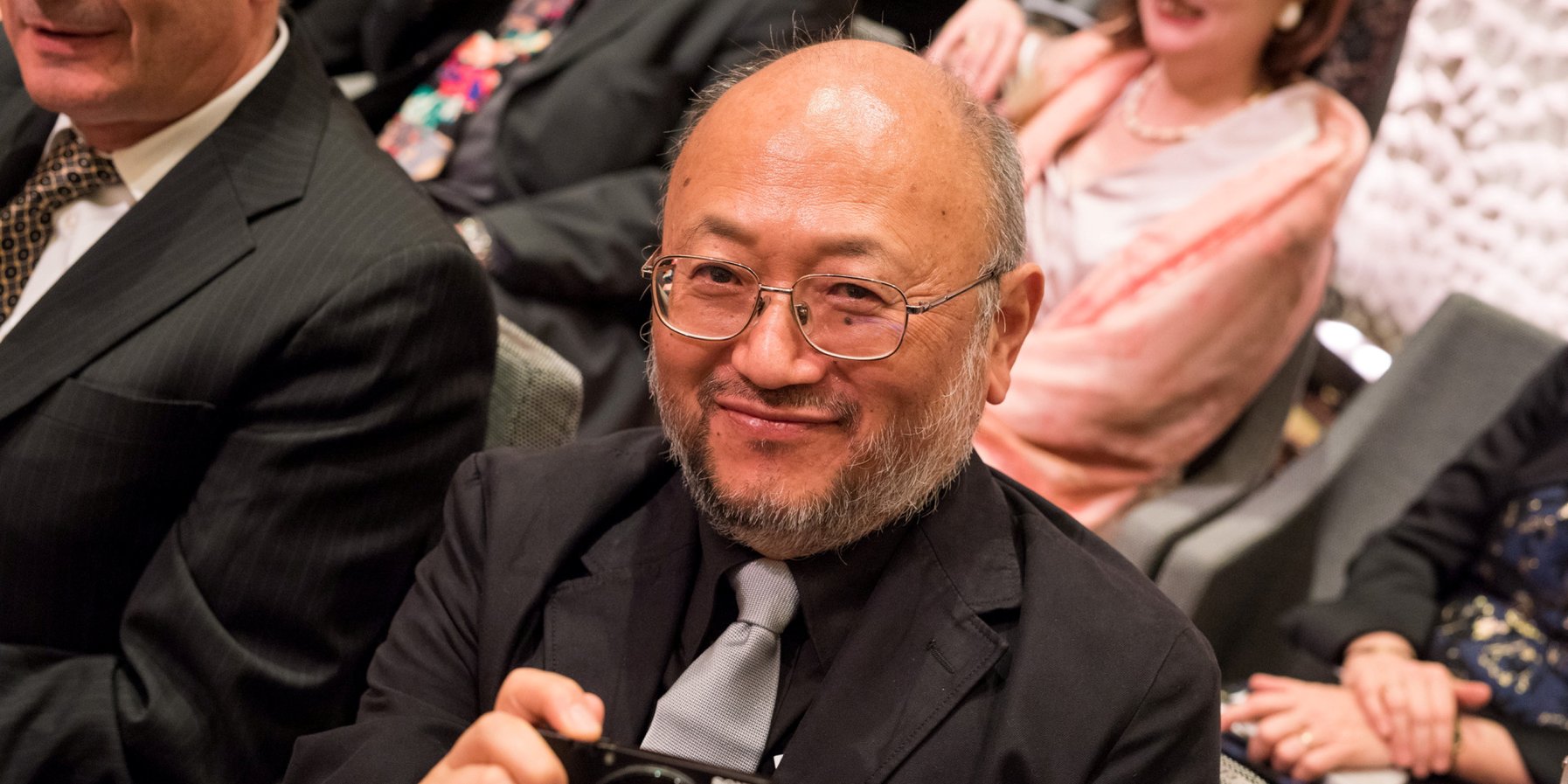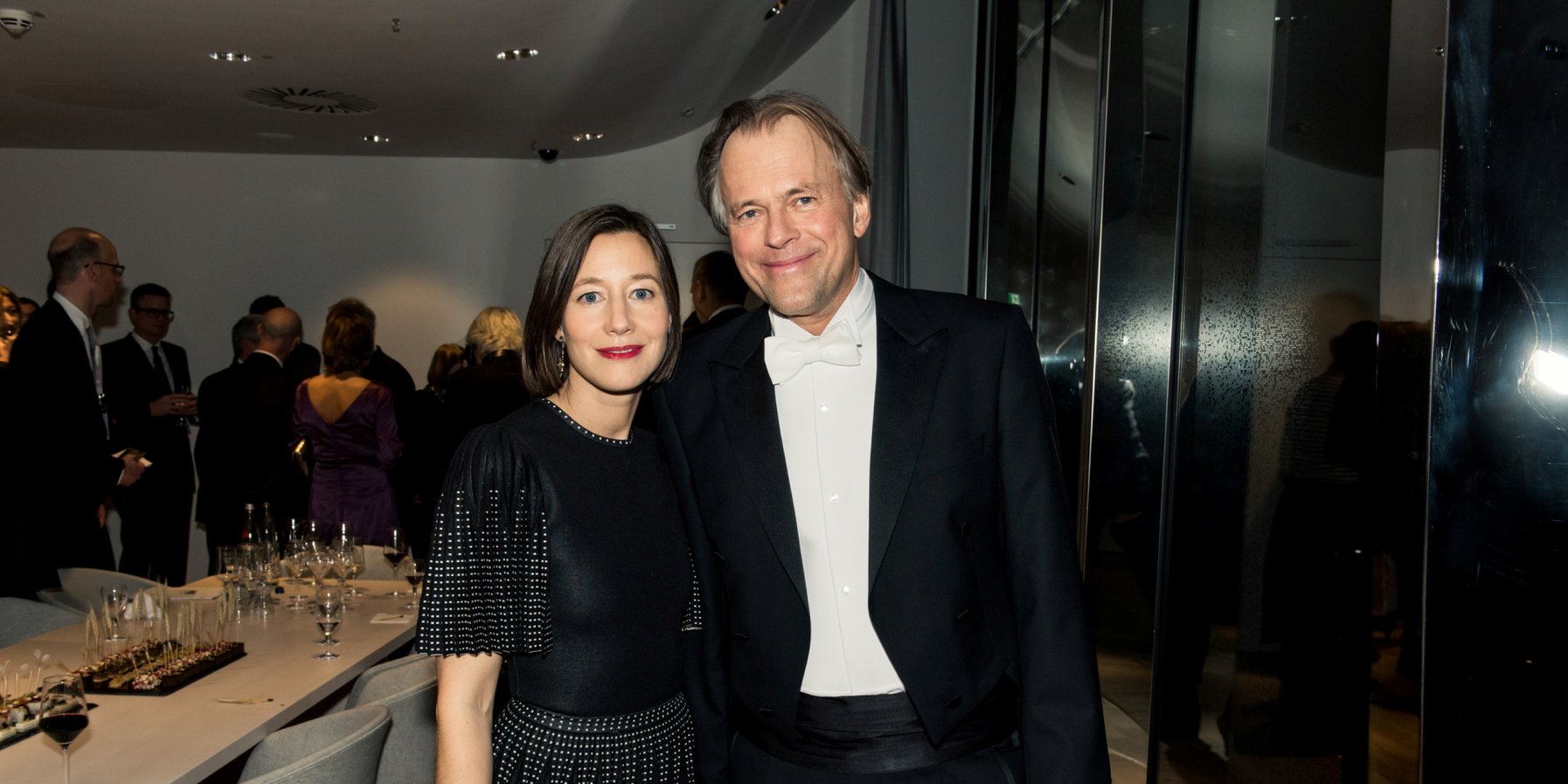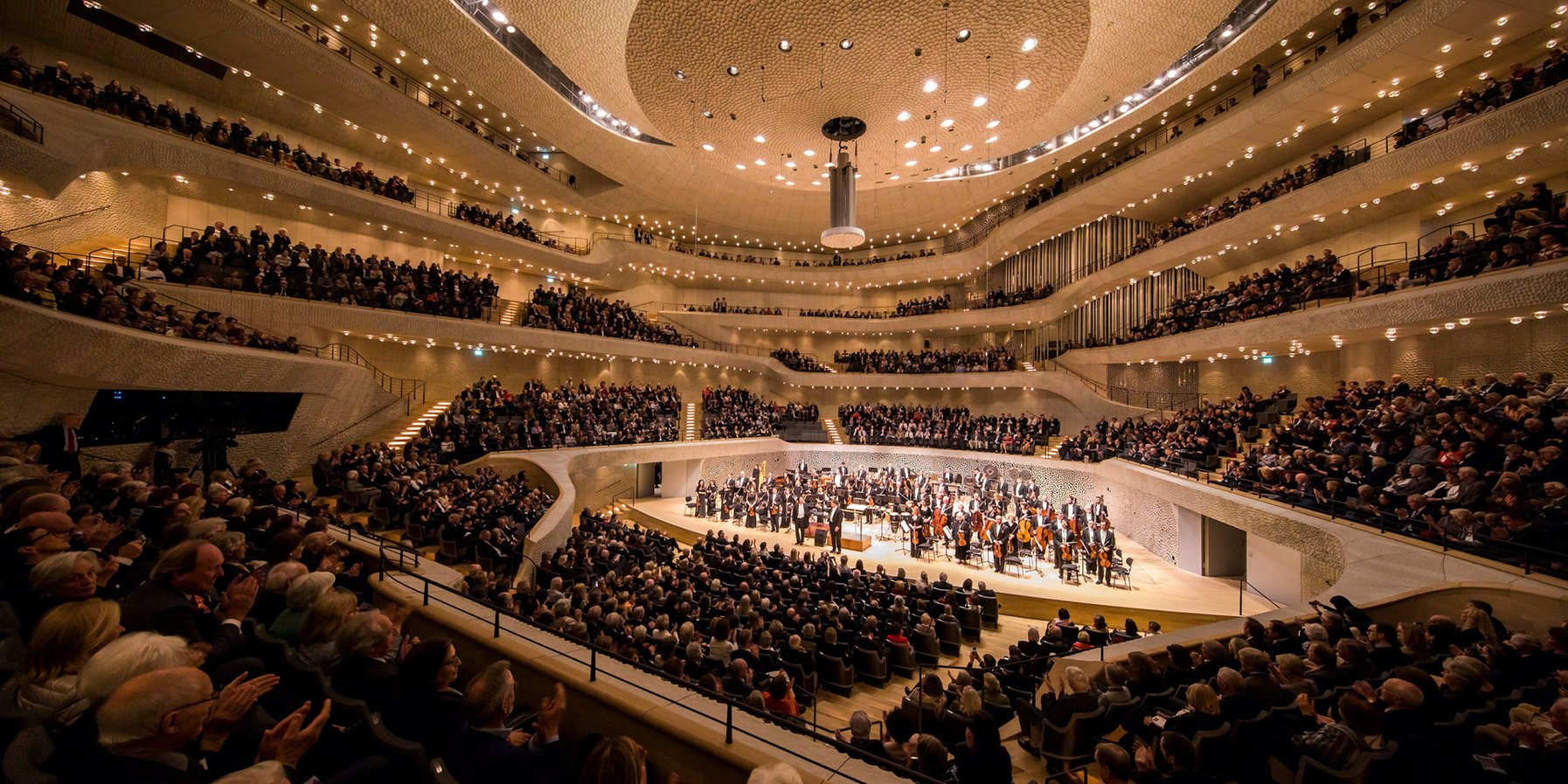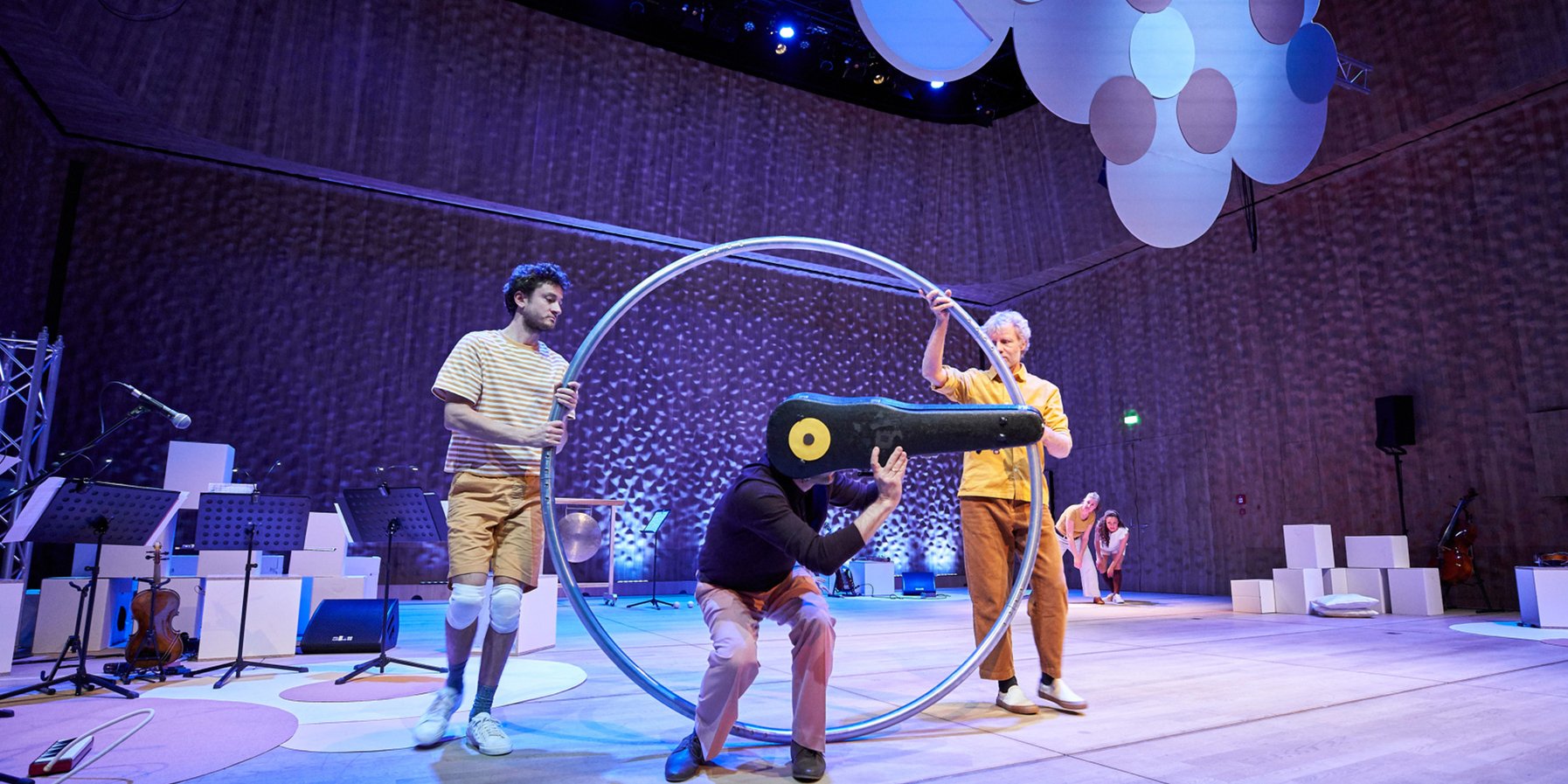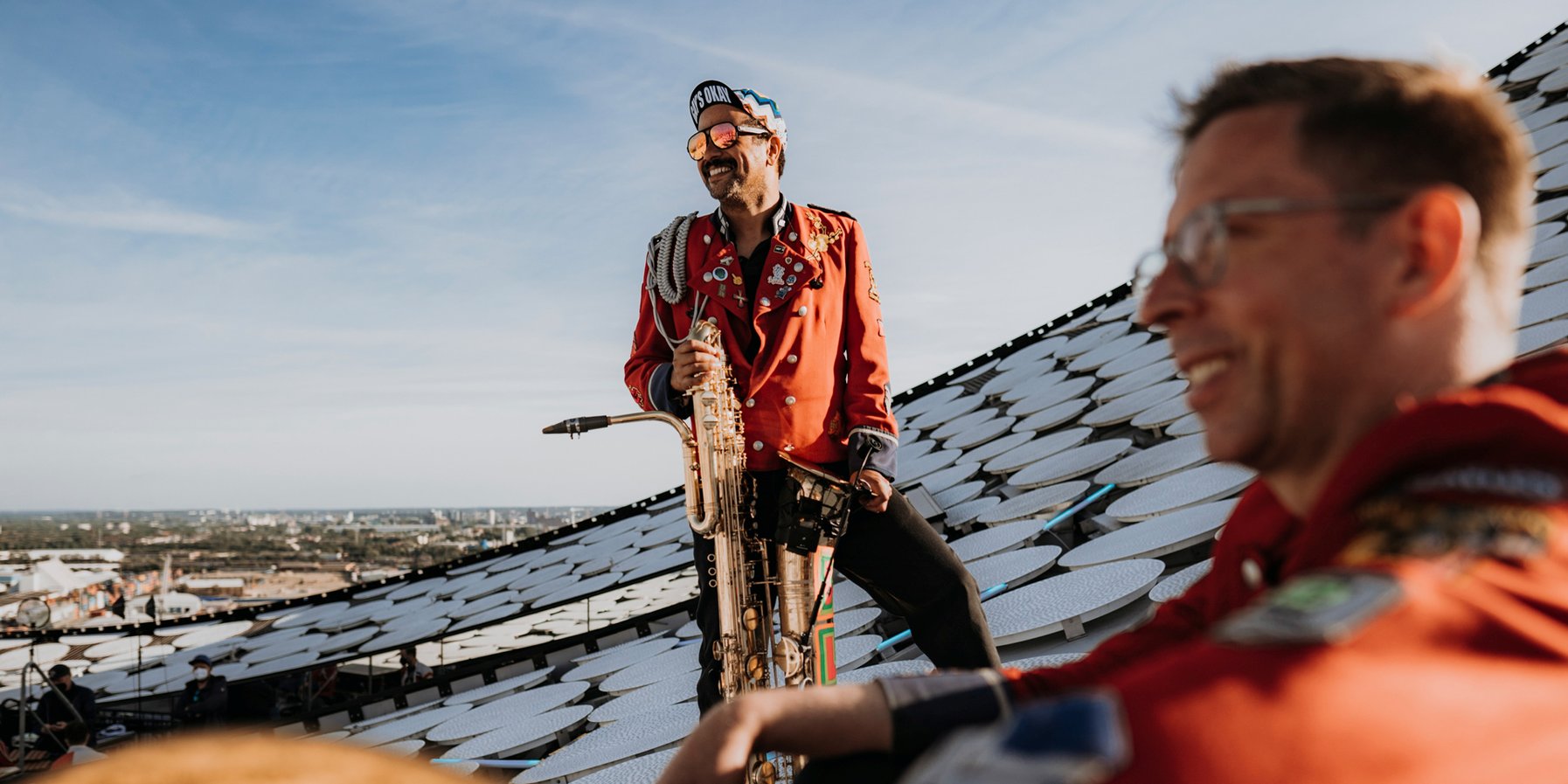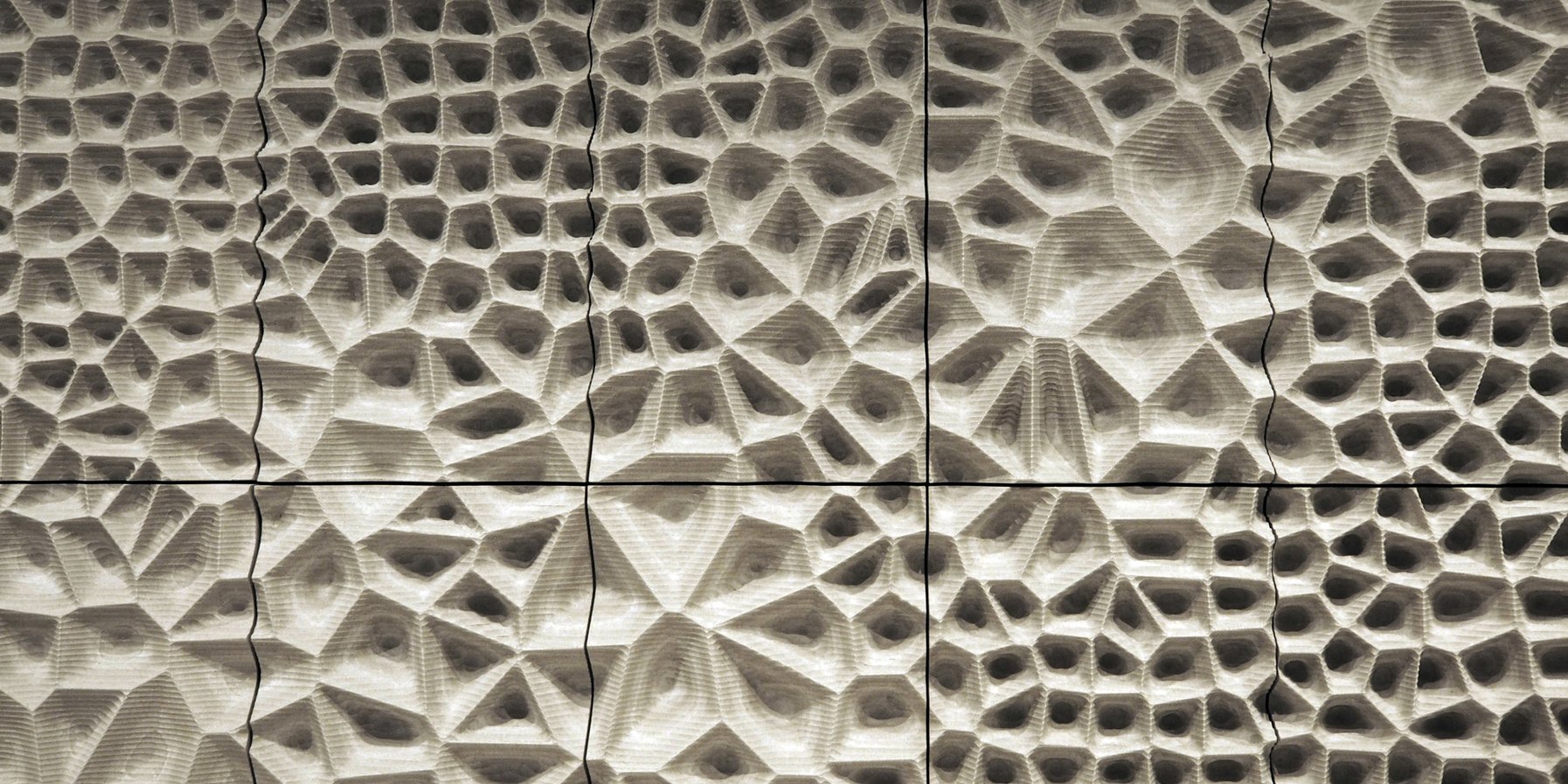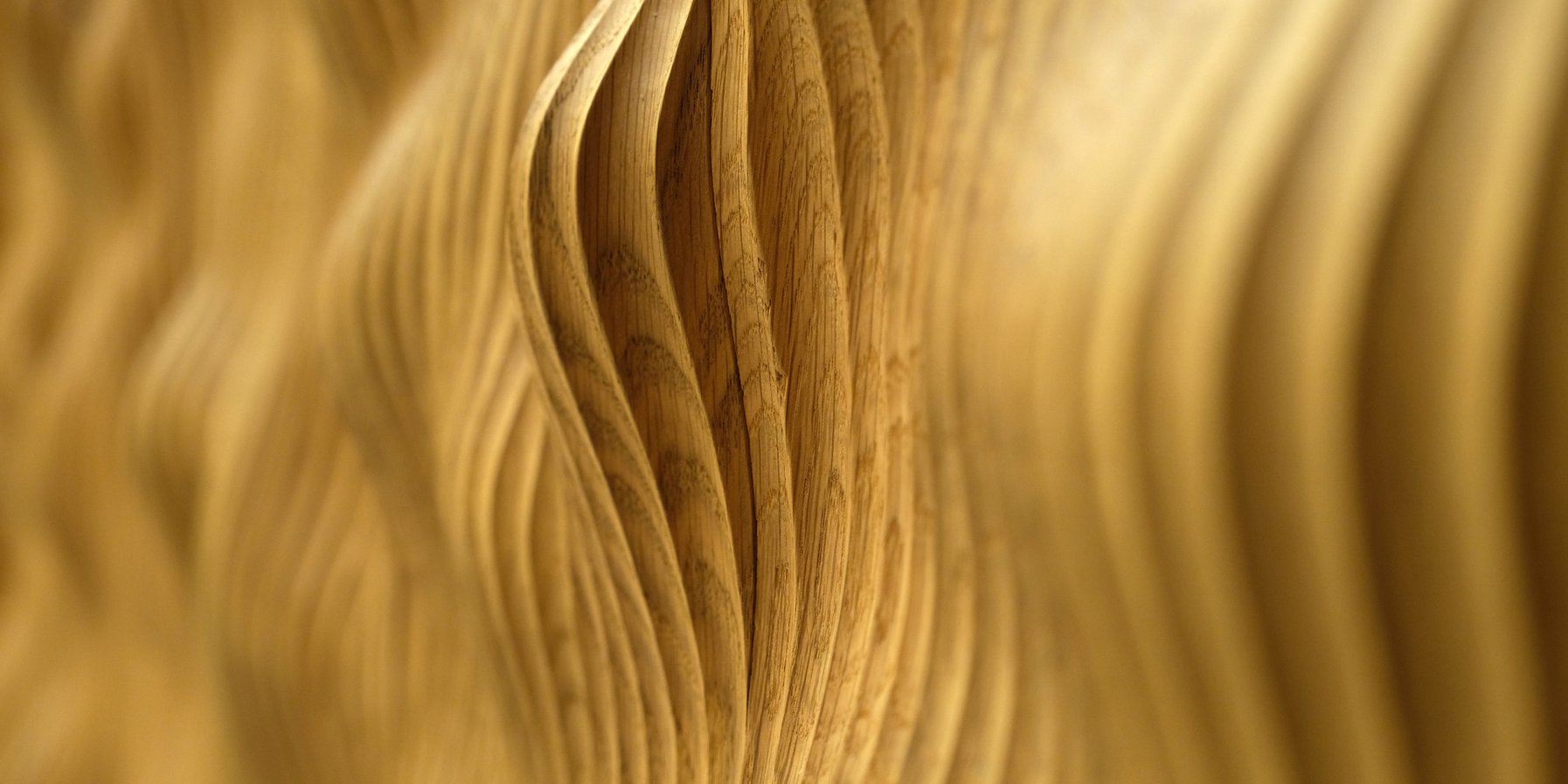Happy Birthday! :The Elbphilharmonie celebrates its fifth birthday
It's better to make sparing use of superlatives. But no-one can deny that the opening of the Elbphilharmonie in Hamburg exactly five years ago marked the dawn of a new era. On the evening of 11 January 2017, the pride and delight of musicians and the public alike at finally taking possession of their new concert hall intensified into a concert moment of exuberant energy. It was like the first firing level of a rocket that launched the Elbphilharmonie with a thunderous roar into lofty orbit, into the very first rank of international cultural venues.
Gala concert: 5 Years of Elbphilharmonie
The gala concert given by the NDR Elbphilharmonie Orchestra under its chief conductor Alan Gilbert was broadcast as a live stream on 11 January 2022 and is now available as a video on demand.
11 January 2017: Opening Night
A bold vision
The Elbphilharmonie was a bold vision developed by four people: Hamburg project manager Alexander Gérard, his wife, art historian Jana Marko, and two of his erstwhile fellow students, Jacques Herzog and Pierre de Meuron, well known as the architects of Tate Modern in London. There had long been discussions about what to do with the striking warehouse standing at the tip of the new HafenCity development. Built on wooden piles driven into the riverbed, it had been used for storing sacks of cocoa and coffee until the rise of container shipping robbed it of its function. The project was first presented in 2003, and both the city and the international cultural scene were electrified by the idea of converting the rectangular brick building into the base of a concert hall, a superstructure whose glass facade would soar like a glittering wave to a height of 100 metres above the water.
When this vision became reality in 2017, shaking off the shadow of the agonisingly long construction phase, public enthusiasm for the new building knew no bounds. And the media response was equally euphoric.
»A stroke of luck for music, for architecture, for Hamburg and Germany!«
Die Welt
British daily The Telegraph placed the Elbphilharmonie on a level with the Golden Gate Bridge and the Sydney Opera House, while the Times felt obliged to admit that there was »no comparable concert hall« in London. »The whole world envies Hamburg the Elbphilharmonie«, wrote the Wall Street Journal, and the New York Times predicted that Hamburg would enjoy a »Bilbao effect«, referring to the new Guggenheim Museum designed by Frank Gehry for the Spanish city.

The Elphi effect
It's true: the Elbphilharmonie's success is so overwhelming that it really cannot be expressed in a single sentence or a number. The clearest statement is undoubtedly made by a total of some 2.9 million concertgoers in the three years that lay between the opening in 2017 and the coronavirus standstill that started in March 2020. In the meantime, this figure exceeds 3 million people who have enjoyed more than 2,500 concerts; the Grand Hall is sold out practically every night. If we add the historic Laeiszhalle, which has also profited from the Elbphilharmonie boom, we are looking at 1.25 million visitors a year, most of whom, incidentally, are not tourists but people from the Hamburg metropolitan area. This represents a trebling in the total number of concertgoers, while the number of subscribers has quadrupled. The Plaza, which offers a marvellous panoramic view of the Hamburg docklands from the point where the old brick warehouse is joined to the modern glass superstructure, welcomed its 15 millionth visitor in March 2022.

Instead of looking at the numbers, we can take a glance at the concert calendar, which confirms that the Elbphilharmonie programme is unique in terms of quality, variety and density. No other venue in the world can boast such a regular stream of top symphony orchestras, conductors and soloists. A guest appearance at the Elbphilharmonie is almost a must for today's classical music elite. It goes without saying that Hamburg's own orchestras, first and foremost the NDR Elbphilharmonie Orchestra, contribute to this top-class portfolio. As resident orchestra at the Grand Hall, the NDR ensemble forms a kind of backbone to the programme with its subscription concerts and spectacular special projects such as György Ligeti's opera »Le Grand Macabre«. Further contributions come from Ensemble Resonanz as resident ensemble at the Recital Hall, as well as from the Hamburg Philharmonic State Orchestra and the Symphoniker Hamburg.
At the same time, there is a lot more than just classical music on the programme. Elbphilharmonie audiences can also hear jazz, pop, music from all over the world as well as lovingly curated family concerts. Then there are festivals with a wide variety of themes: versatile artists such as sitar virtuoso Anoushka Shankar or the performance artist Laurie Anderson, regional focuses such as Syria, Poland, Iceland or the Caucasus, or composers such as Charles Ives, György Ligeti, Iannis Xenakis and George Benjamin. Living legends from other genres also appear regularly on the programme: Burt Bacharach, Bryan Ferry, John Cale and Caetano Veloso, rock bands like Wilco or The National and underground stars such as Anohni or Solange, who created their own exclusive shows for the Elbphilharmonie. And the late fashion designer Karl Lagerfeld, who was born in Hamburg, even used the Grand Hall as an extra-large catwalk in 2017.
Highlights from five years of the Elbphilharmonie
THE PERFECT SYMBIOSIS OF ARCHITECTURE AND MUSIC
Artists and audiences are lured into the Elbphilharmonie by its spectacular exterior architecture, which continues in the interior, from the curved escalator known as the »Tube« to the Plaza – which can be visited without a concert ticket – to the beautifully designed foyer landscape. It's exactly this factor that makes the difference, according to Elbphilharmonie General & Artistic Director Christoph Lieben-Seutter: »The quality of the surroundings is decisive. The overall experience provided by the architecture and the interior design makes visitors much more interested in and receptive to the music. And that in turn enables us to put on a more exciting programme.« The heart of the building, of course, is the Grand Hall. In contrast to the »shoebox« arrangement of most concert halls, it is laid out in the almost circular »vineyard« design, with tiered seating surrounding the concert platform. This places the audience much closer to the performers, and it also creates a stronger sense of community and a more intense listening experience.
The Grand Hall has a so-called »white skin« that plays a central role both visually and acoustically: the walls and balustrades are covered with some 10,000 individually milled drywall panels that are roughly the size of a football pitch, and ensure optimum refraction and distribution of the sound. Japanese acoustician Yasuhisa Toyota was responsible for the computer-aided calculation and production of this remarkable surface. Lieben-Seutter's evaluation, based on many concerts he has attended: »The acoustics are fantastic for many different kinds of music, especially for more complex scores, for contemporary music and electroacoustics, but also for early music played on original instruments that lack the impact of their modern counterparts. The acoustics are so focused and intimate that even the softest nuances and finest vibrations of the instruments can be heard very well even in the last row.«
Equally popular with performers and concertgoers is the Recital Hall. Here, the walls are made of French oak which, as with the walls in the Grand Hall, was milled to produce effective acoustics and also has a beautiful organic appearance. The flexible layout makes various configurations possible: in the classic »shoebox« set-up, the concert platform is located at the front of the room with tiered rows of seats rising towards the back. In the Recital Hall, however, all of the seats can be removed so that the space can also be used for dance events or banquets. From chamber music and song recitals to staged family concerts, electronic and unusual concert formats: this hall is the location for a diverse range of high-quality events.
A BUILDING FOR EVERYONE
New standards are also set by our wide selection of music education events. The range of concerts for every age – from babies to high-school pupils – is already extensive, but the real aim is to enable people to take active part in music above and beyond the pure concert experience; to this end, there are workshops, opportunitites to meet artists and a host of other ways to get involved. More than 3,400 events with nearly 200,000 participants reflect the high level of interest in our activities.
»Every Hamburg child should visit the Elbphilharmonie at least once.«
Olaf Scholz, former Mayor of Hamburg
With the »World of Instruments« in the basement, the Elbphilharmonie has a number of rooms for music education activities. From the piccolo to the tuba and from the synthesizer to the gamelan (a set of Balinese percussion instruments), every conceivable type of musical instrument is available for school classes to try out when they visit in the mornings. For kindergartens in the suburbs there is a music bus, the »Sound Mobile«, which transports instruments and other objects for the youngsters to make music with. Last but not least, there are five amateur ensembles in which Hamburg people meet regularly at the Elbphilharmonie to rehearse and give concerts, expressing their love for music and their connection to the concert hall.
In his inaugural speech General & Artistic Director Christoph Lieben-Seutter said, »The Elbphilharmonie is the finest ship that will never set sail. It is securely moored by the Elbe, and has already won a secure place in Hamburg hearts.« The intervening five years have proved him right. The vision has borne fruit.
Author: Clemens Matuschek
English translation: Clive Williams

